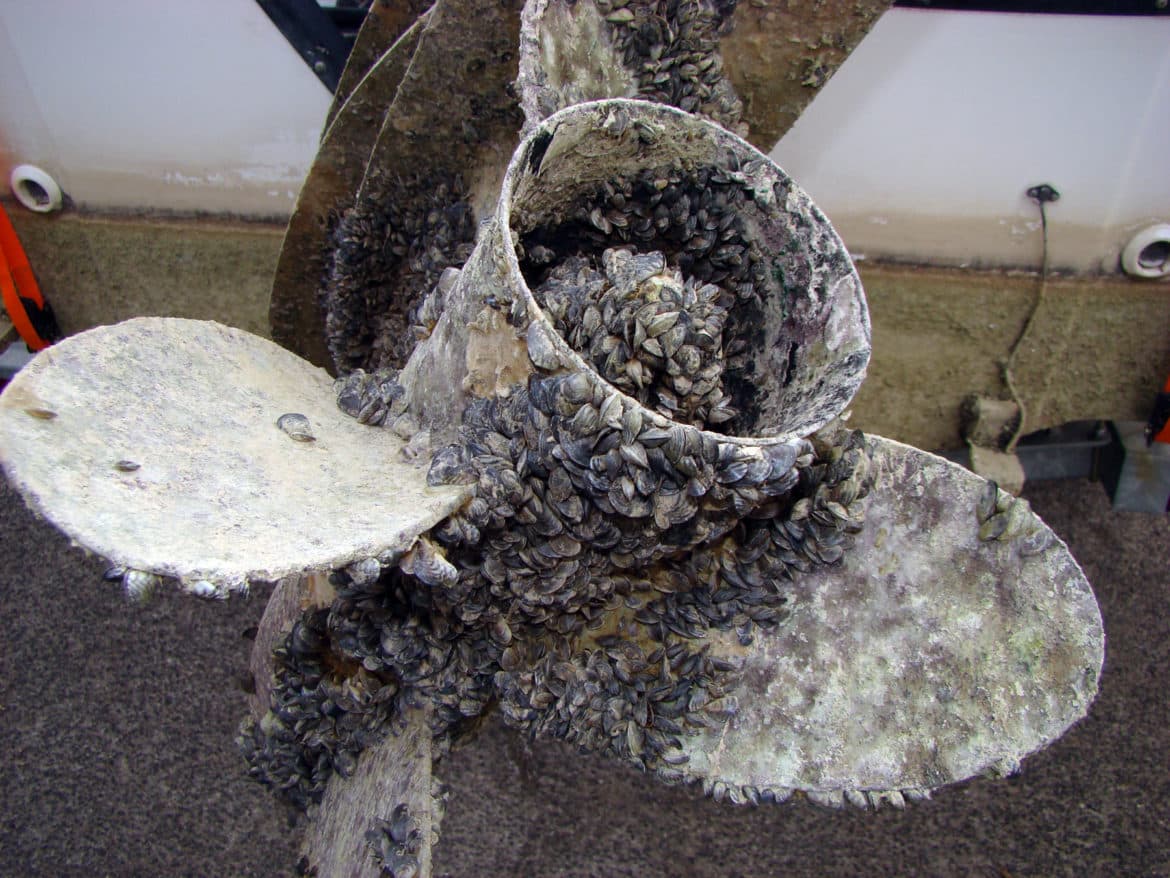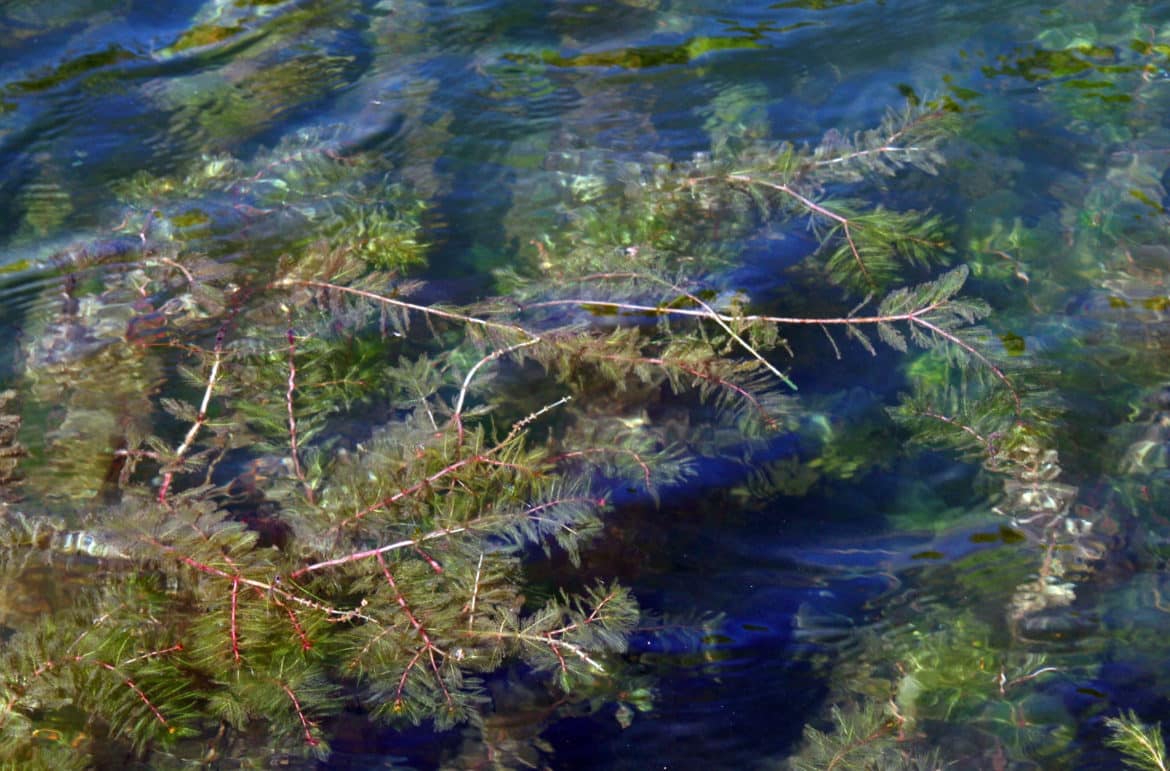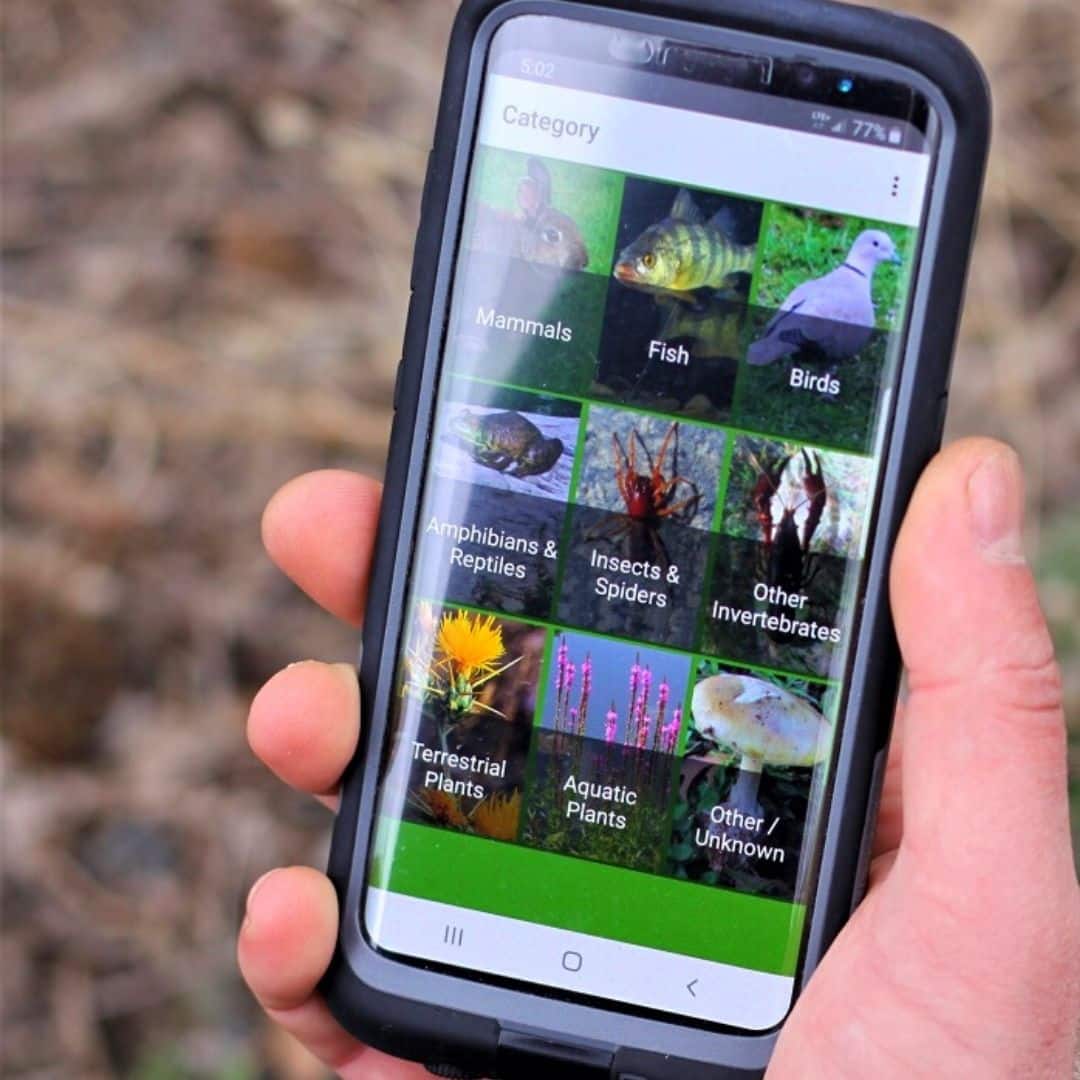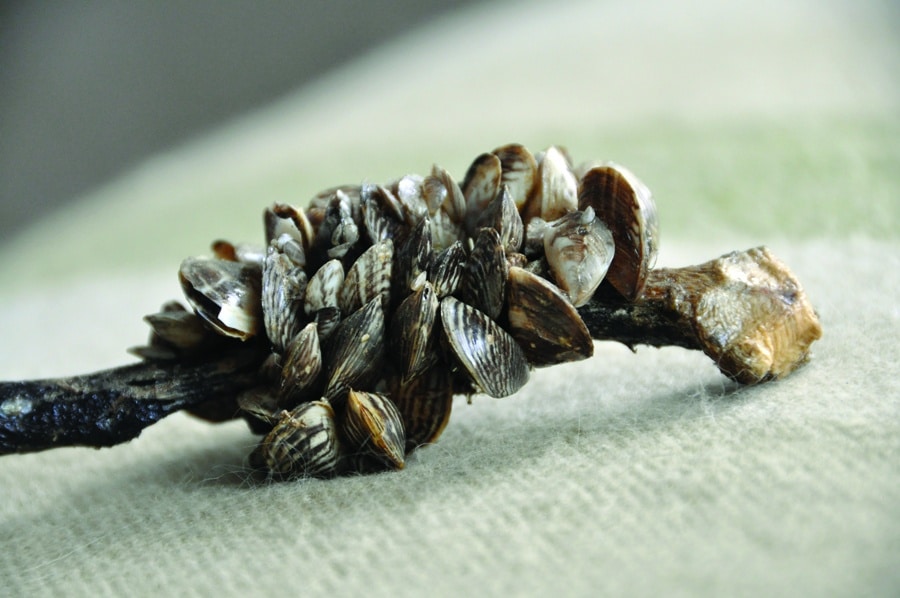By Jana Rolland | July 20th, 2022
Stopping the spread of invasive species from one province to another is a collaborative effort between organizations and agencies across the country. In early July 2022, BC’s Conservation Officer Service intercepted and decontaminated a Zebra mussel infested barge headed for BC’s Lower Mainland. As the service’s largest decontamination of invasive mussels to date, this was a major win for the systems put in place to protect BC from the introduction and spread of invasive species.
“It’s a success story. That network of Saskatchewan, Alberta and BC, plus some of the western States, all working together to say, ‘heads up – there’s a barge heading your way that could be infested’. That’s success, they’ve kept it out of BC,” noted Gail Wallin, ISCBC Executive Director.

While this historic invasive decontamination spared BC from a new species on its watchlist, other aquatic invasives including Eurasian watermilfoil, Yellow flag iris, and the European green crab have already established in parts of the province. These species all have negative impacts on BC’s waterways and ecosystems.
Eurasian watermilfoil can form dense mats creating shade for sun dependent native plants, degrading water quality, preventing water flow, and easily getting caught on boats and equipment. Yellow flag iris’ extensive root system can create a thick mat that damages wildlife habitat, reduces water flow, and crowds out native vegetation. European green crabs outcompete native crabs for food and habitat and pose a serious threat to many other marine species. They are highly damaging to eelgrass beds, critical habitat for many invertebrates and fish.

How You Can Help

Most people don’t realize how many species they could be transporting simply by moving their watercraft and gear from one water body to the next. Many aquatic invasive species can easily hitch a ride on our gear and make their way into new ecosystems. The best way you can help stop the spread of aquatic invasive species in BC is by practicing “Clean, Drain, Dry” principles. From boat motors, to stand up paddle boards, to fishing gear and water shoes, all items that make their way into the water should be cleaned, drained and dried before taking the next dip.

If you see an invasive species, report it! Apps like iNaturalist and our Report Invasives App allow scientists to keep a closer eye on the spread and activity of invasive species in the province. This type of community science is extremely important and luckily, is very easy to contribute to! Download one of these apps to your smartphone and you’re ready to get reporting.
Check Out Our Media Coverage:
Jana is a Communications Coordinator at ISCBC. She is passionate about environmental protection and inspiring positive action in her community. In her free time, you’ll find her with a paintbrush in hand. You can reach Jana at jrolland@bcinvasives.ca.
Share


















